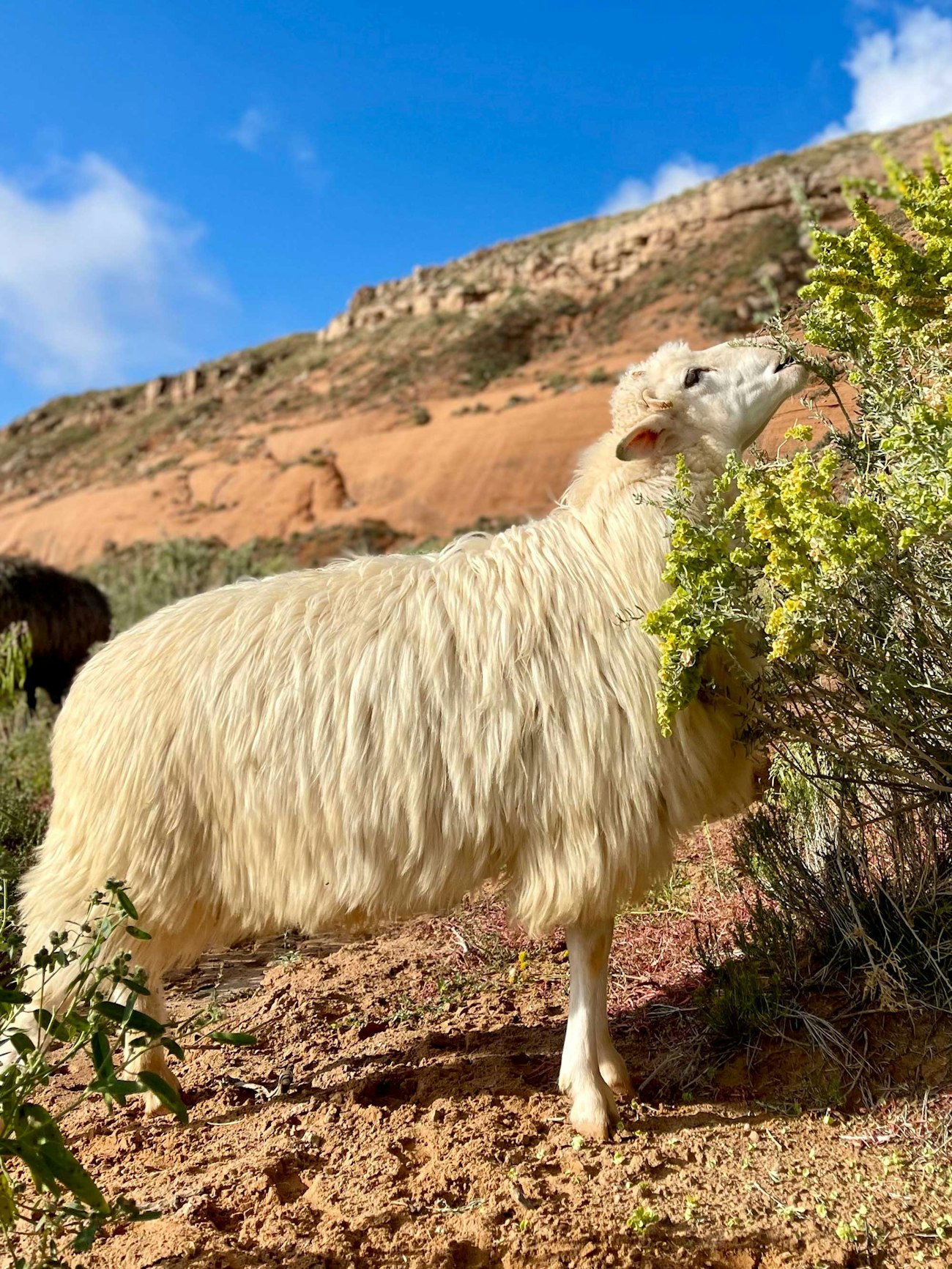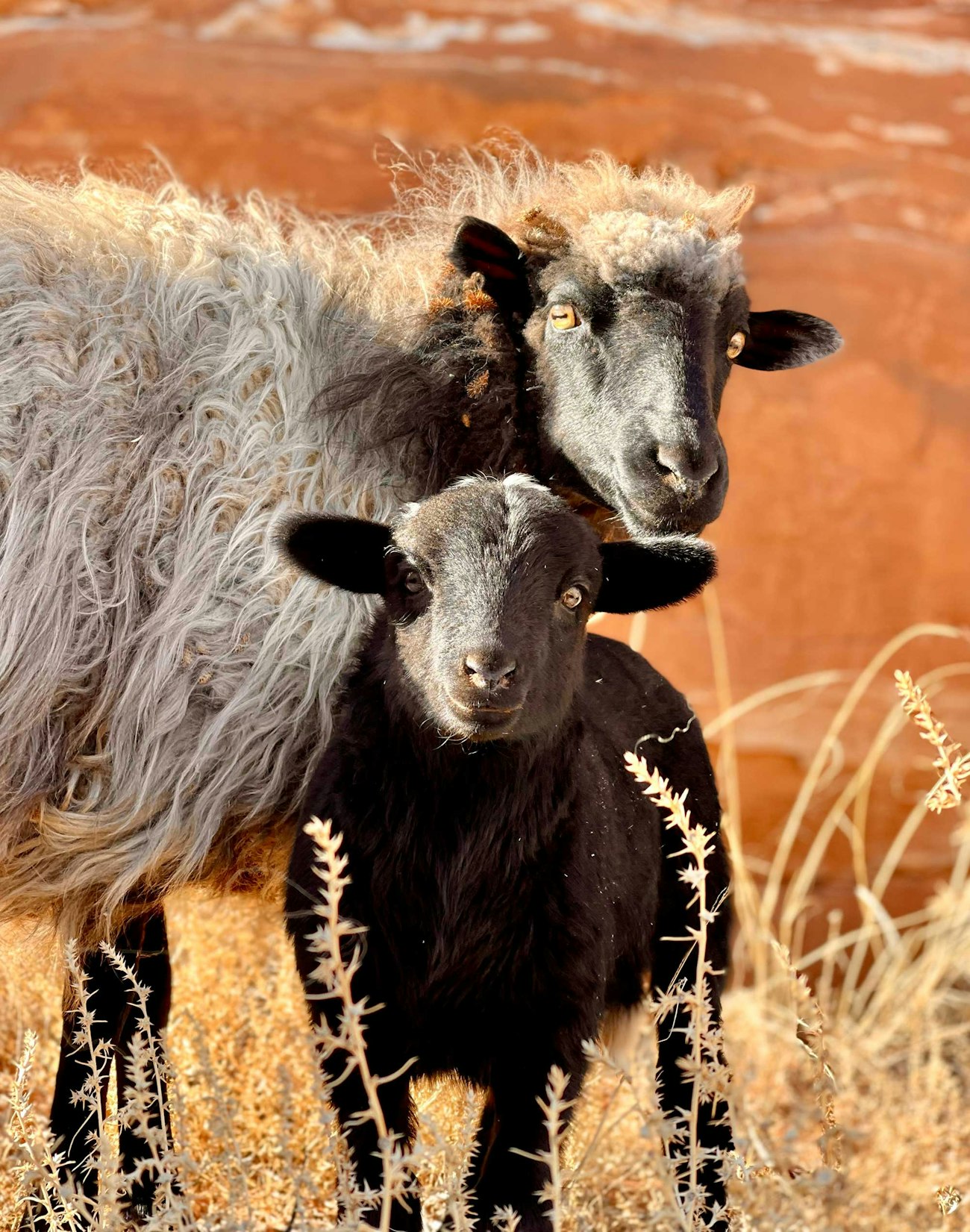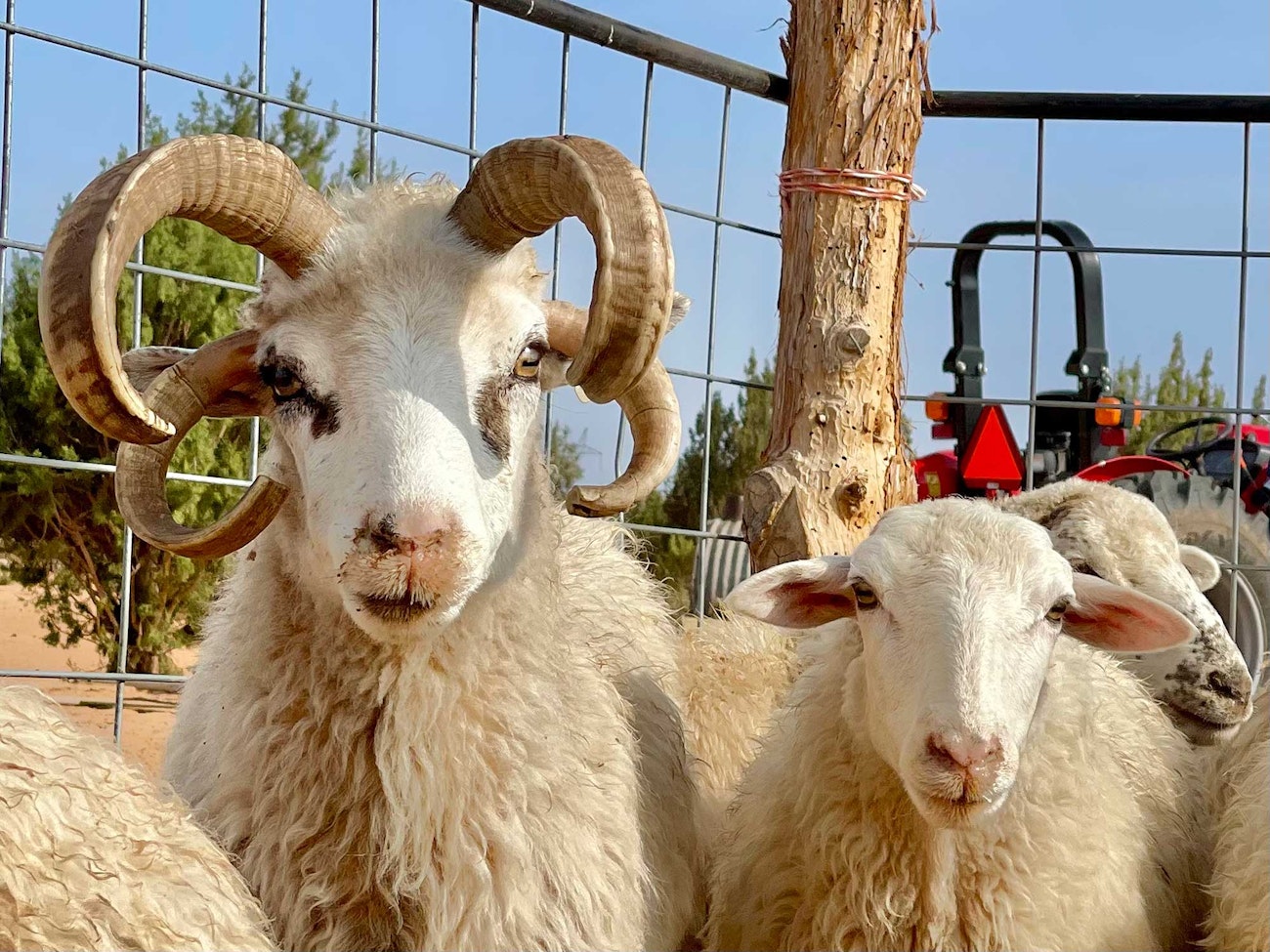Welcome to our series Meet the Sheep! We love hearing about sheep from the shepherds who raise them. These important perspectives can help us better understand the wool we spin and the people, animals, and landscapes that create it. Check out the series to meet more woolly friends. —Editors
Navajo folklore says that t’aa dibé (the first sheep) were a gift from the Holy People. But as a failure of our own pride, those first sheep were taken away and promised to return when our humility was regained. History says that the Spanish Churra sheep were driven up from Mexico in the mid-1500s. This expansion led to the eventual acquisition of the sheep by my ancestors, a reacquaintance if you will, with an animal that they’ve remembered in their creation stories, sacred chants, and prayers.
Since then, there has been a timeline of fruitful years as well as involuntary reductions of what was once recorded as the “old-type” Navajo sheep. Today’s Navajo-Churro sheep are the result of selective breeding by Indigenous and Hispanic breeders. They are smaller than your average commercial and finewool breeds. They have a smaller frame and instincts that drive them to be good range foragers—being quite “deerlike.” These traits allowed these sheep to become well adapted to the arid Southwest and its variable terrain and climate.
 The Navajo-Churro are well-equipped for foraging in the semi-arid and arid terrain of the Southwestern United States.
The Navajo-Churro are well-equipped for foraging in the semi-arid and arid terrain of the Southwestern United States.
The silky, lustrous wool produced by the old-type Navajo sheep had become prized for its durability, best characterized in the textiles that have remained intact for centuries. By industry standards, Navajo Churro is considered a “carpet wool” because of its staple length and coarseness. Navajo Churro have maintained a primitive fleece structure, which means that they have primary follicles that produce a longer “guard hair” outercoat and secondary follicles that produce a true-wool inner coat. Navajo-Churro wool can also contain short brittle fibers known as kemp and longer medullated fibers throughout the fleece. Sheep with a primitive fleece structure remain somewhat unimproved, retaining the ability to produce wool in an array of natural colors.
 A closer look reveals the longer outercoat of the Navajo-Churro.
A closer look reveals the longer outercoat of the Navajo-Churro.
Navajo-Churro ewes are quite prolific, lambing unassisted each spring, and in some cases, twice in one year. Twins and triplets are not uncommon. The lambs are known to bounce right up and get to nursing after being born. These newborn lambs will remain at their mother’s side while she grazes, keeping themselves within the range of hearing their mom’s mutters. The fierce maternal instinct of Navajo Churros and their vivacious lambs are what make this breed of sheep well matched for lambing out on the range.
Both rams and ewes may be polled, have scurs (vestigial horns), or grow two or more horns. Ideally, Navajo-Churro sheep will have horns that do not obscure their vision and ability to graze, nor cause injury or infection to themselves. Navajo-Churro sheep are one in a handful of breeds across the world that carry a genetic mutation that causes them to have multiple sets of horns. This mutation can also cause split upper eyelid deformity in genetically multihorned animals. Split upper-eyelid deformity could cause severe injury to the eyes of an affected animal, so it is encouraged that breeders pay attention to their breeding practices of sheep with multi-horns.
 Rams and ewes may grow two or more horns.
Rams and ewes may grow two or more horns.
A lot like my ancestors, Navajo-Churro sheep are quite resilient. Those that exist today stem from sheep that escaped with their shepherds during the Long Walk and Navajo Stock Reduction. These flocks were passed down from generation to generation, with their tales of survival and prayers of continuance.
Look for Nikyle’s full article on the Navajo-Churro sheep in the upcoming Winter 2024 issue of Spin Off, available on newsstands this December.
Nikyle Begay (they/them) is a Diné shepherd, fiber artist, and teacher based in Ganado, Arizona, on the Navajo Nation. Nikyle is the Director of Rainbow Fiber Co-Op and brings a wealth of knowledge and expertise to the project. Nikyle has experience working in technology and the nonprofit sector, as well as an extensive background in sheep flock management, wool production, traditional wool processing, and the weaving arts. You can find them on Instagram @navajoshepherd.

